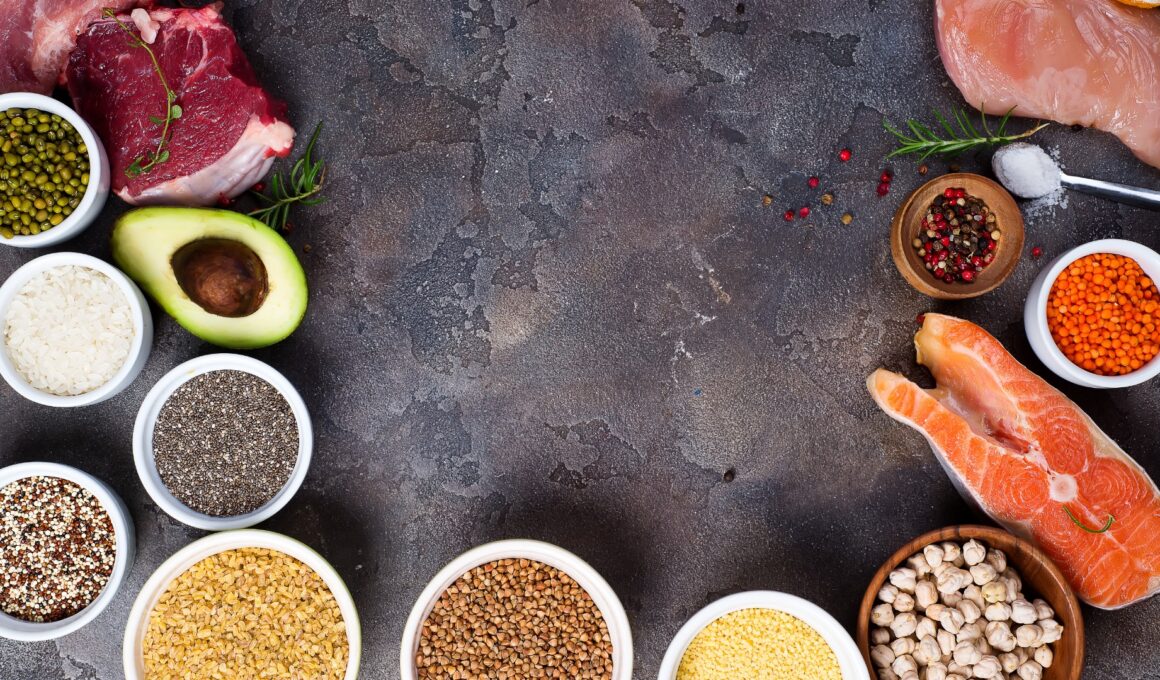The major food groups we consume can be broken down into two main categories: macronutrients and micronutrients. These are terms you might have heard thrown around in the past, but perhaps you’re unsure what they mean? Here we will look at what the difference is, and at what implications this has for your health and what you should be eating.
Macronutrients
The macronutrients are carbohydrates, proteins and fats. You define a macronutrient as something that you require in large quantities in your diet (or sometimes as the major sources of energy), so these are the three food groups that should sit at the top of your pyramid.
Protein: Getting enough protein in your diet is key if you want to build muscle and aid fat burning and many studies support protein as one of the key components for achieving desirable body composition. Protein contains 4 calories per gram, but these calories are used in a different way when compared with carbohydrates as the amino acids get converted to tissue and muscle. It is generally advised that you aim to get about 1 gram of protein for each pound of bodyweight (2.2 grams per kilogram). This is quite a high suggestion though, and most people (non-bodybuilders) will do fine with less.
Fat: Fat has often had a bad rap, but actually it’s an important part of your diet and supports brain function, energy supply, protein absorption and more. The idea that fat causes weight gain or bad cholesterol has been largely debunked, even in the case of saturated fats. The only type of fat you need to avoid is hydrogenated ‘trans fats’ which are found in things like ready meals. Fat contains 9 calories per gram making it more calorific than carbohydrates, but actually this energy is released more slowly throughout the body so that’s not the only concern. Traditionally it has been advised that you keep fat intake very low, but more recent advice suggests that a diet made from 30% fat and above may be more in-keeping with the way we have evolved to eat and may better support optimal health.
Carbohydrates: Carbohydrates come from things like bread, potatoes and other sources. Carbohydrates contain 4 calories per gram which is the same as protein, but they act very differently. When you eat carbohydrates you see, they are broken down very quickly by the body resulting in a very rapid release of sugar into the blood. This spike results in an insulin spike which in turn causes the sugar to be stored as fat. While fat is higher in calories then, it’s carbohydrates that will do more to damage your waistline which is why many diets involve cutting them out or limiting them. Don’t cut out carbohydrates or any of your food groups entirely, but instead try switching to slower release (low GI) carbohydrates instead.
Micronutrients
So those are the macronutrients… what’s a micronutrient? Well as you might have guessed, this is something that you need to get in your diet in small amounts. That doesn’t mean that they aren’t also essential – it just means that a small amount goes a long way.
Micronutrients include things like minerals and vitamins and these include zinc, iodine, vitamin C, vitamin A… Normally we get our micronutrients from our macronutrients. For instance you would consider something like a banana to be a carbohydrate (a macronutrient), yet it contains micronutrients such as potassium.
The Rest
What about the things in our diet that we haven’t covered here? Well while splitting our foods into macro and micronutrients is a useful way to think about the things we eat, it is unfortunately an imperfect system and there are some things that don’t fit all that comfortably into any one category.
Fibre for instance is an important part of our diet, but often isn’t really considered a macro or micronutrient. Others consider water to be a ‘micronutrient’ although this is a little misleading seeing as we actually need a lot of water – though we get a lot of it from our food.
So consider your micro and macronutrients when creating your diet, but realise that you need to be getting other things in there too and not to focus on it too much. Instead read the science and learn how each individual nutrient will affect your body and go from there!




